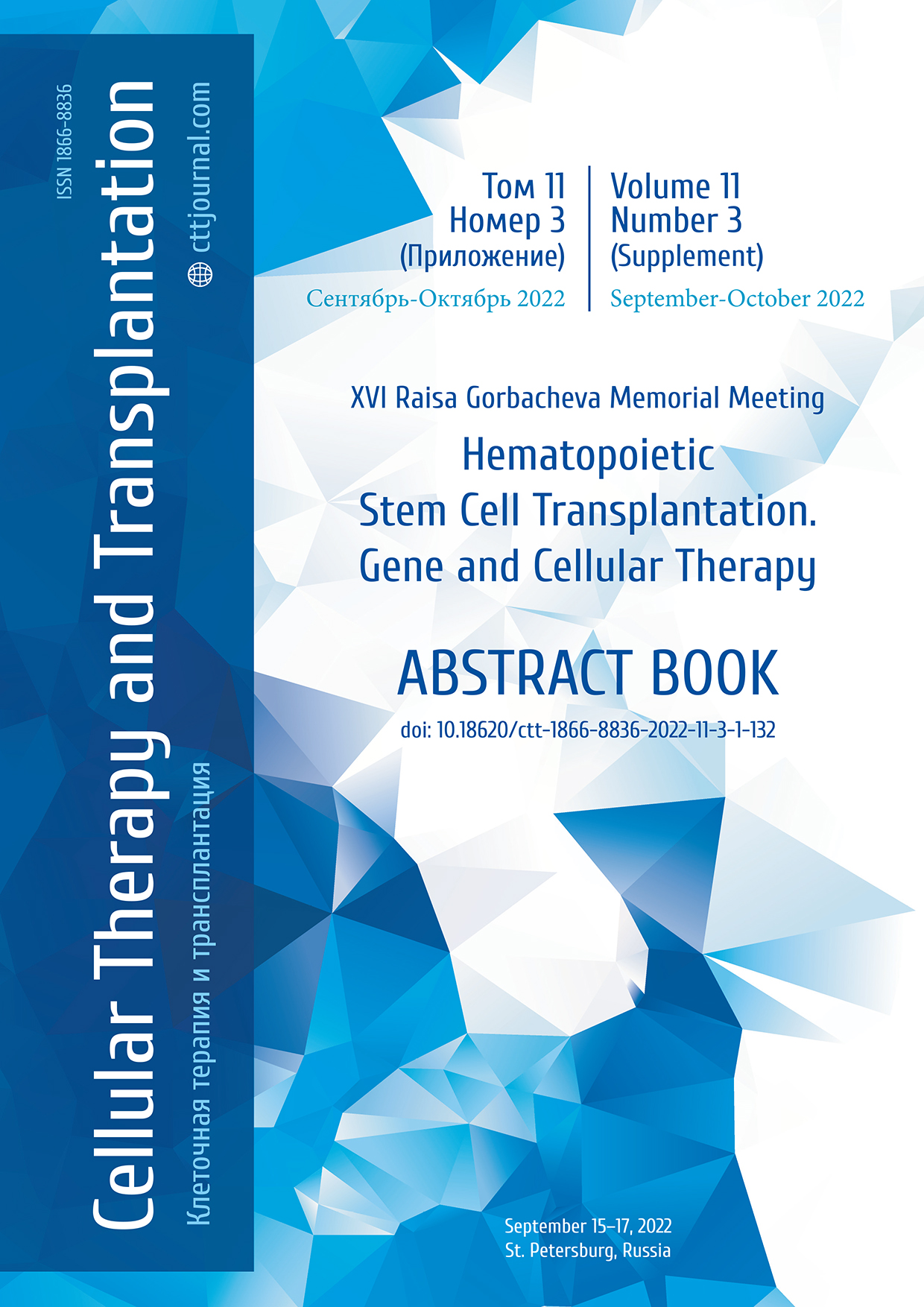CM-05. Determining predictors of unfavorable course in low- and intermediate-risk patients with myelodysplastic syndrome
Ksenia S. Yurovskaya, Elena V. Morozova, Maria V. Barabanshchikova, Nikolay Y. Tsvetkov, Yulia Yu. Vlasova, Tatiana L. Gindina, Ildar M. Barkhatov, Ivan S. Moiseev, Alexander D. Kulagin
RM Gorbacheva Research Institute, Pavlov University, St. Petersburg, Russia
Contact: Dr. Ksenia S. Yurovskaya, phone: +7 (923) 575-70-56, e-mail: Ksenia_Kud_@mail.ru
Summary
Life expectancy of the patients with low- and intermediate-risk myelodysplastic syndrome (MDS) does not always correspond to the IPSS prognostic system (IPSS-R). According to the literature data, deterioration of clinical prognosis is associated with distinct factors, e.g., lack of response to therapy, infectious complications due to neutropenia, iron overload caused by blood transfusions, presence of the bone marrow fibrosis, development of secondary MDS after previous chemo- and radiotherapy. The predictors of potential transformation into refractory anemia 1-2 with blast excess and acute myeloid leukemia are insufficiently studied so far. Our study was aimed for determining the predictors of unfavorable course of myelodysplastic syndrome in the patients with low-to-intermediate risk of IPSS-R.
Materials and methods
We observed a cohort of 136 patients classified into the very low/low/intermediate risk group according to IPSS-R. The median age at the time of diagnosis was 49.5 years (18-76), with median follow-up period of 1019 days (42-9740). The male-to-female ratio was 62:74. A P-value of less than 0.05 was taken as statistically significant.
Results and discussion
Five-year overall survival was 59.5% (95% CI: 47.0-70.0, median not reached); 5-year progression-free survival was 44.6% (95% CI: 32.9-55.6, median 49.8 months). The five-year cumulative progression incidence was 40.7% (95% CI: 29.5-51.5), mortality without progression was 15.6% (95% CI: 8.4-24.8). Based on the results of univariate analysis of the five-year overall survival, the factors with a p-value of less than 0.15 were selected: age at initial diagnosis, presence of bone marrow stromal fibrosis, serum ferritin level at the time of diagnosis. These factors were further included into the proportional risks model. According to the results of multivariate analysis, only age at the time of diagnosis provided a statistically significant effect on five-year overall survival (p<0.03).
Conclusion
Comparable overall and non-progressive survival rates suggest a predominant effect of progression-free mortality on the clinical outcomes upon therapy in the patients with low-risk MDS. The data obtained indicate the heterogeneity of the patient group with very low/low/intermediate risk MDS, along with absence of convincing clinical predictors of progression. It is necessary to search for additional molecular biology prognostic factors in order to identify the patients with low- and intermediate-risk MDS with higher probability of disease progression.
Keywords
Myelodysplastic syndrome, clinical outcomes, prognostic factors.


